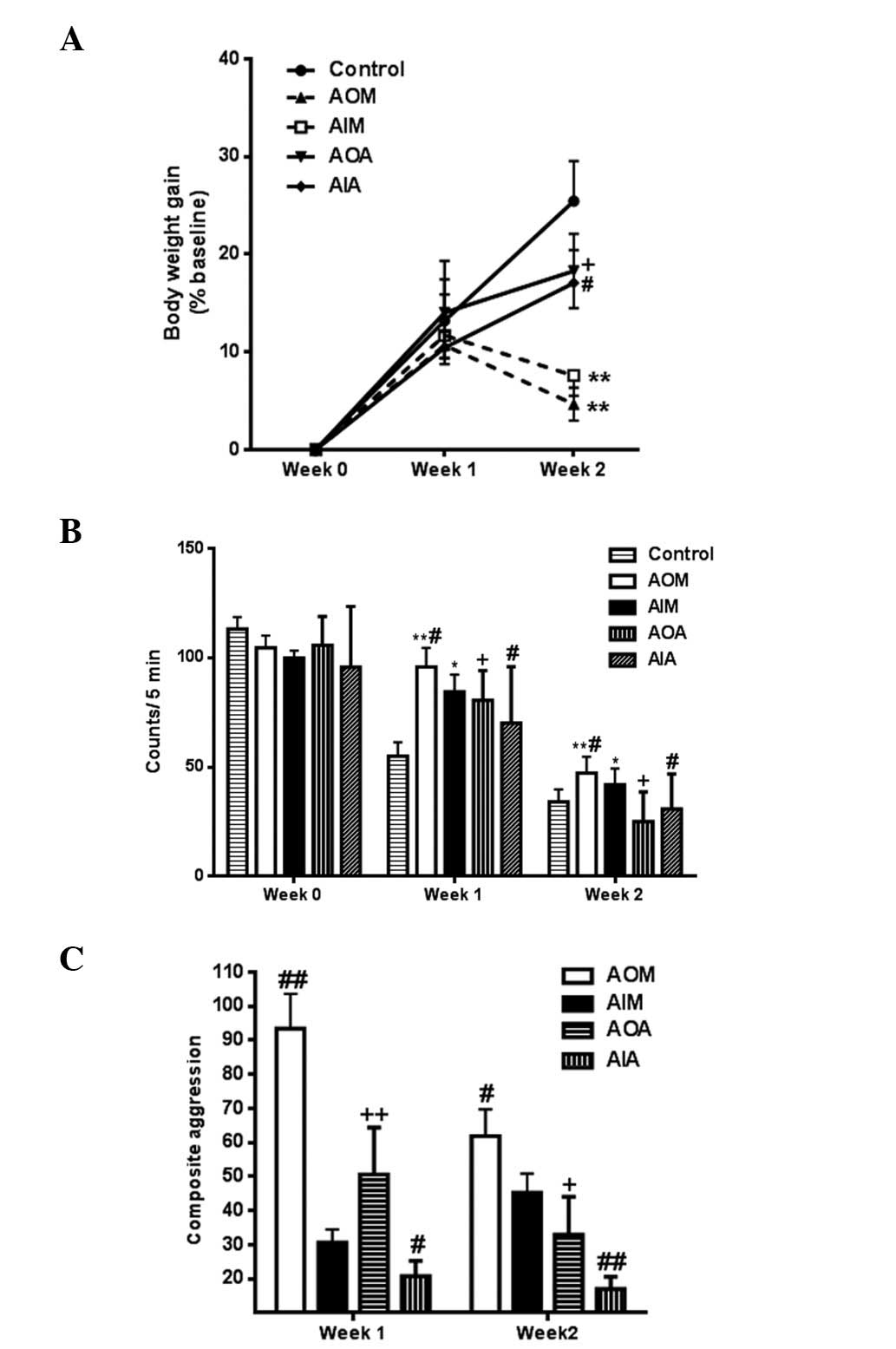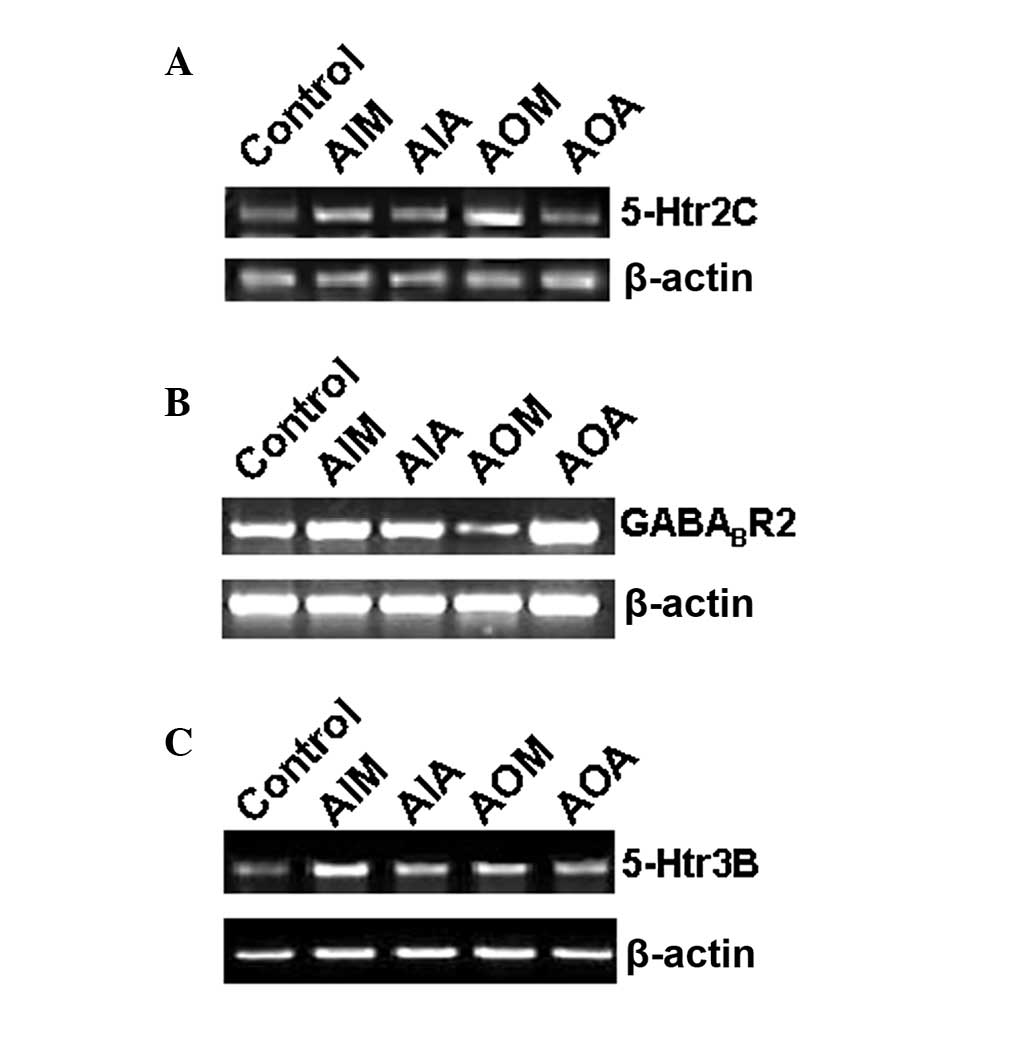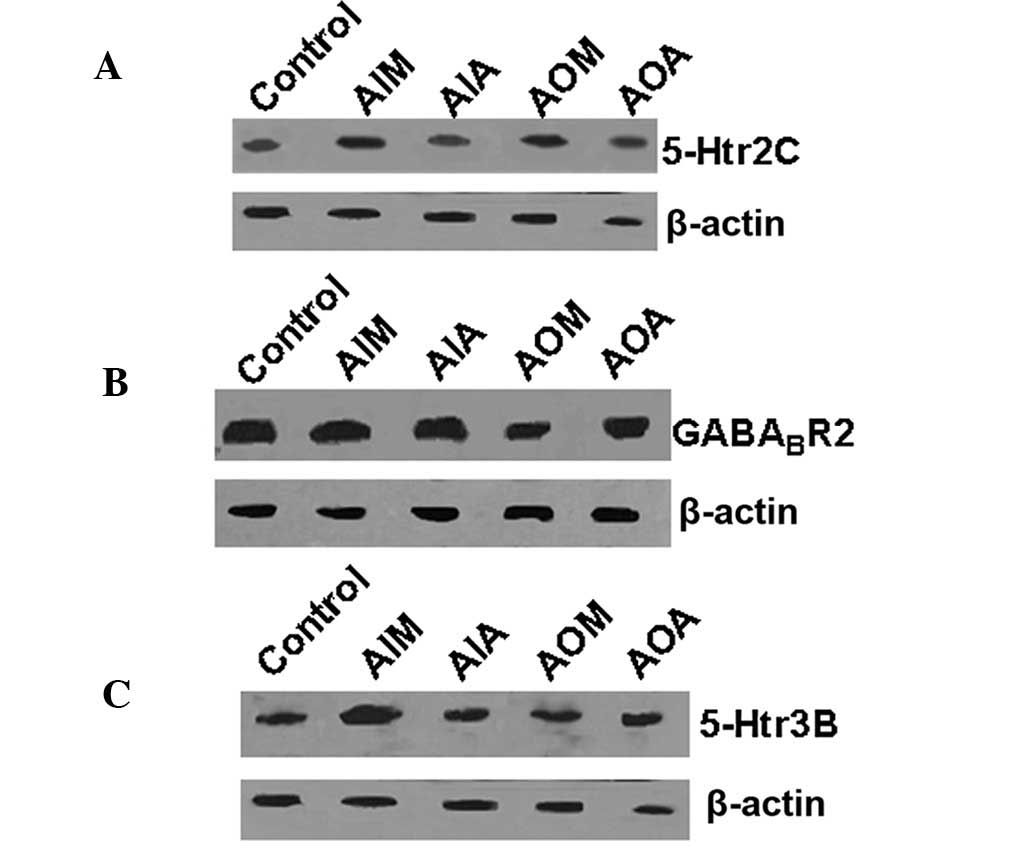|
1
|
Kessler RC, Aguilar-Gaxiola S, Alonso J,
et al: The global burden of mental disorders: an update from the
WHO World Mental Health (WMH) surveys. Epidemiol Psichiatr Soc.
18:23–33. 2009. View Article : Google Scholar : PubMed/NCBI
|
|
2
|
Mostofsky E, Penner EA and Mittleman MA:
Outbursts of anger as a trigger of acute cardiovascular events: a
systematic review and meta-analysis. Eur Heart J. 35:1404–1410.
2014. View Article : Google Scholar : PubMed/NCBI
|
|
3
|
Tao HY, Qiao MQ and Wang WY: The
dependability of anger pathopoiesis and psychological stress.
Zhejiang Zhong Yi Yao Da Xue Xue Bao. 33:140–141. 2009.(In
Chinese).
|
|
4
|
Wang CX, Zheng HX, Wang JW, et al: A
probing into the imbalance of immunity system, endocrine, nerves
and the liver affected by anger. Liaoning Zhong Yi Za Zhi.
24:205–206. 1997.(In Chinese).
|
|
5
|
Liu XW, Qu HD, Zhang HM, et al: Content
change of ATCH/CORT/IL-2/IL-8 in blood from rats with Qi impaired
by anger. Zhong Guo Quan Ke Yi Xue. 11:1653–1654. 2004.(In
Chinese).
|
|
6
|
Qiao MQ, Wang WY and Zhang HY:
Epidemiological survey on etiology of Gan-qi inversion syndrome and
Gan-qi stagnation syndrome and study on the evocative mode of
emotional diseases. Zhongguo Zhong Xi Yi Jie He Za Zhi. 27:117–119.
2007.(In Chinese). PubMed/NCBI
|
|
7
|
Chao YB, Wei S, Qiao MQ, Wang JQ and Zhang
HY: Analysis of monoamine neurotrasmitter content in serum and
different encephalic regions of PMS liver-qi invasion, depression
rat models. Yi Xue Yan Jiu Za Zhi. 39:19–21. 2010.(In Chinese).
|
|
8
|
Qiao MQ, Zhang HY and Wang HJ:
Relationship between anger-in and anger-out and premenstrual
syndrome, Gan-qi inversion syndrome and Gan-qi stagnation syndrome.
Shanxi Yi Yao Za Zhi. 27:1359–1361. 2006.(In Chinese).
|
|
9
|
Czéh B, Michaelis T, Watanabe T, et al:
Stress-induced changes in cerebral metabolites, hippocampal volume,
and cell proliferation are prevented by antidepressant treatment
with tianeptine. Proc Natl Acad Sci USA. 98:12796–12801. 2001.
View Article : Google Scholar : PubMed/NCBI
|
|
10
|
Zuo HY and Wang DW: Advances of
hippocampus proteomics. Zhong Guo Lin Chuang Jie Pou Xue Za Zhi.
23:333–336. 2007.(In Chinese).
|
|
11
|
Ge HY, Chen B, Xu D, et al: Influence of
Saikosaponina A on monoamine neurotransmitters and the
corresponding metabolin compositions in depressed rats’ brain.
Zhong Guo Gao Deng Xue Xiao Hua Xue Xue Bao. 29:1535–1538. 2008.(In
Chinese).
|
|
12
|
Yang XY, Ma SP and Qu R: Effects of
Bupleurum chinense extracts on lipid peroxidation in chronic
unpredictable mild stress model of depression in rats and
lymphocyte proliferation in mice. Zhong Guo Yao Ke Da Xue.
38:442–445. 2007.(In Chinese).
|
|
13
|
Xu SY, Bian RL and Chen X: Methodology of
Pharmacological Experiment. 3rd edition. People’s Medical
Publishing House; Beijing: pp. 202–203. 2002, (In Chinese).
|
|
14
|
Wei S, Zhang H, Gao J, et al: Impact of
social isolation and resident intruder stress on aggressive
behavior in the male rat. Neural Regen Res. 5:1175–1179. 2010.
|
|
15
|
Rauser L, Savage JE, Meltzer HY and Roth
BL: Inverse agonist actions of typical and atypical antipsychotic
drugs at the human 5-hydroxytryptamine(2C) receptor. J Pharmacol
Exp Ther. 299:83–89. 2001.PubMed/NCBI
|
|
16
|
Ulrich D and Bettler B: GABA(B) receptors:
synaptic functions and mechanisms of diversity. Curr Opin
Neurobiol. 17:298–303. 2007. View Article : Google Scholar : PubMed/NCBI
|
|
17
|
Blier P: The pharmacology of putative
early-onset antidepressant strategies. Eur Neuropsychopharmacol.
13:57–66. 2003. View Article : Google Scholar : PubMed/NCBI
|
|
18
|
Guo YH, Sheng Wei, Gao J, Song CH and Qiao
MQ: Effect of Jingqianping granule on gene expression profile in
the hippocampus of the anger-out rat model. Zhong Guo Yao Li Xue
Tong Bao. 28:150–154. 2012.
|
|
19
|
Páez-Pereda M: New drug targets in the
signaling pathways activated by antidepressants. Prog
Neuropsychopharmacol Biol Psychiatry. 29:1010–1016. 2005.
View Article : Google Scholar : PubMed/NCBI
|
|
20
|
Wang H and Zhang M: The role of
Ca2+-stimulated adenylyl cyclases in bidirectional
synaptic plasticity and brain function. Rev Neurosci. 23:67–78.
2012. View Article : Google Scholar
|
|
21
|
Ganea D, Rodriguez R and Delgado M:
Vasoactive intestinal peptide and pituitary adenylate
cyclase-activating polypeptide: players in innate and adaptive
immunity. Cell Mol Biol (Noisy-le-grand). 49:127–142. 2003.
|
|
22
|
Guo YH, Gao J, Xu KY, Song CH and Qiao MQ:
Effect of Jingqianshu granule on gene expression profile in the
hippocampal of the anger-in rat model. Zhong Guo Yao Li Xue Tong
Bao. 27:1317–1321. 2011.
|
|
23
|
Wang L, Zhou GB, Liu P, et al: Dissection
of mechanisms of Chinese medicinal formula Realgar-Indigo naturalis
as an effective treatment for promyelocytic leukemia. Proc Natl
Acad Sci USA. 105:4826–4831. 2008. View Article : Google Scholar : PubMed/NCBI
|

















